Abstract
Twenty-three children (aged less than 18 years) and 17 adults with severe widespread dystonia were treated with high doses of benzhexol (up to 130 mg daily introduced slowly over many weeks). Children tolerated higher doses (median 30 mg/day) than adults (median 20 mg/day). 52% of the children gained useful benefit, many (43%) without unwanted side effects. Such an approach was less successful in adults; 41% gained benefit, but only 35% had no side effects. Twelve adults with severe axial dystonia, and two children with life-threatening generalised dystonia were treated with a combination of a low constant dose of tetrabenazine to which were added pimozide and benzhexol as necessary. The dose of tetrabenazine was aimed at 75 mg daily; pimozide was increased (6 to 25 mg/day) until the dystonia was relieved or Parkinsonism and other side-effects prevented further increments; if necessary benzhexol (6 to 30 mg/day) then was added to control side-effects and to provide additional benefit. 75% of the adults with severe axial dystonia, and one of the two children with life threatening generalised dystonia gained useful benefit from this regime. It is concluded that high dose benzhexol is the present first treatment of choice for children with severe dystonia, and is worth a try in adults but with less expectation of success. When benzhexol treatment alone fails in adults with severe disabling axial dystonia, or in children with life-threatening generalised dystonia, combined therapy with tetrabenazine, pimozide and benzhexol may give valuable symptomatic relief.
Full text
PDF
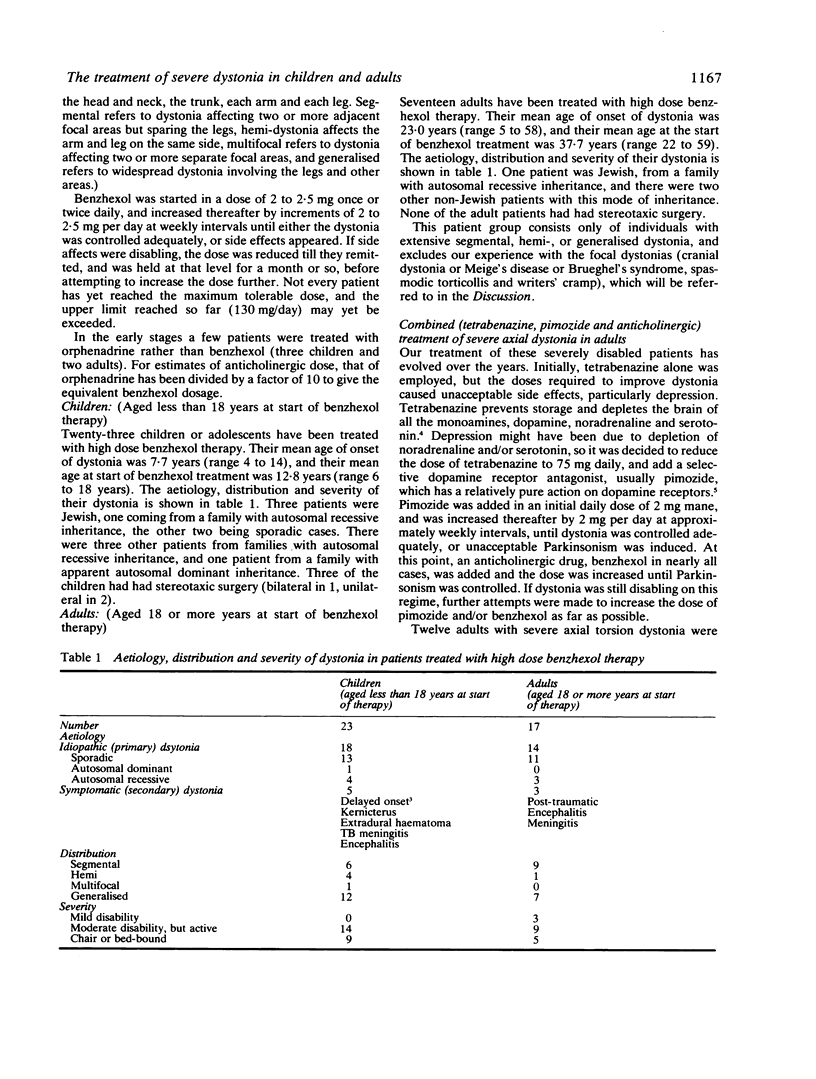

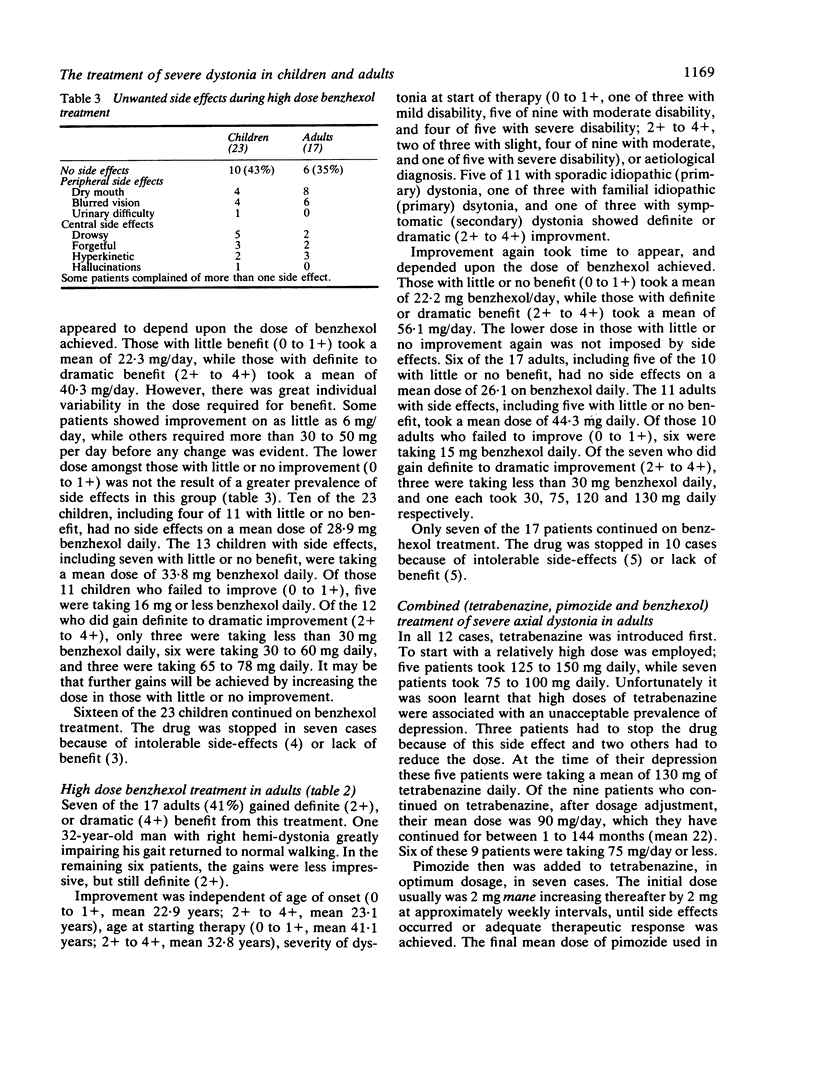
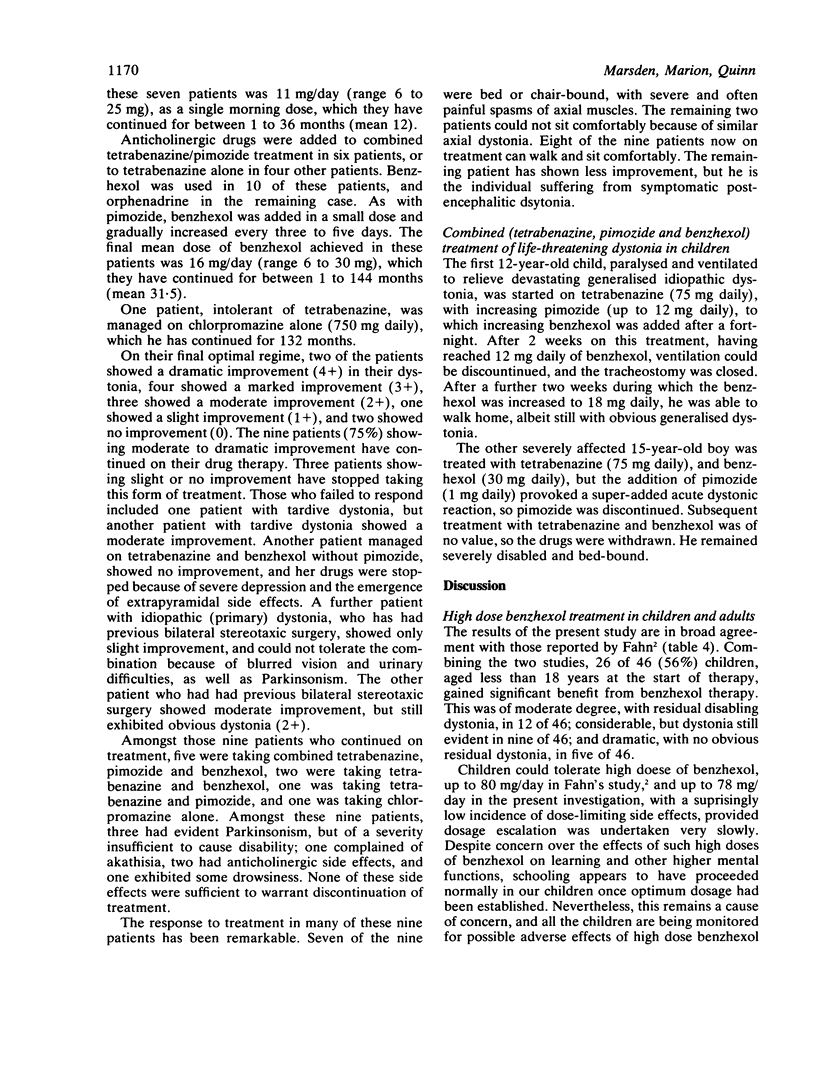

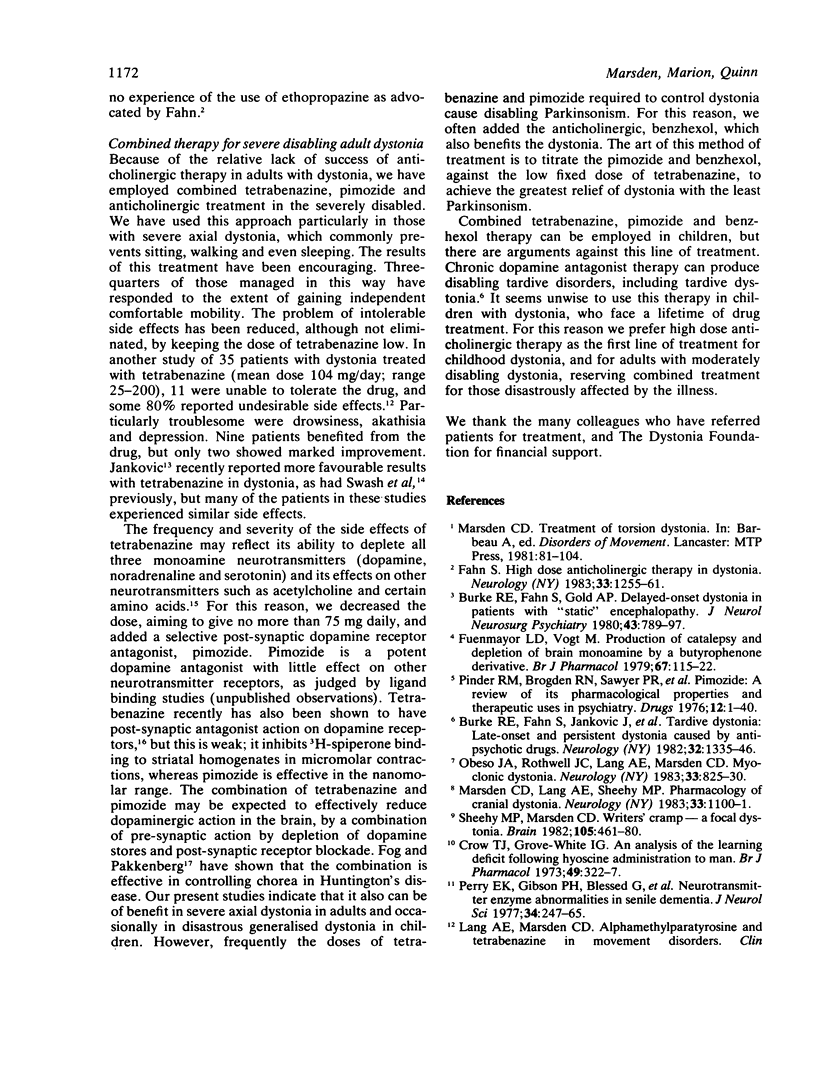
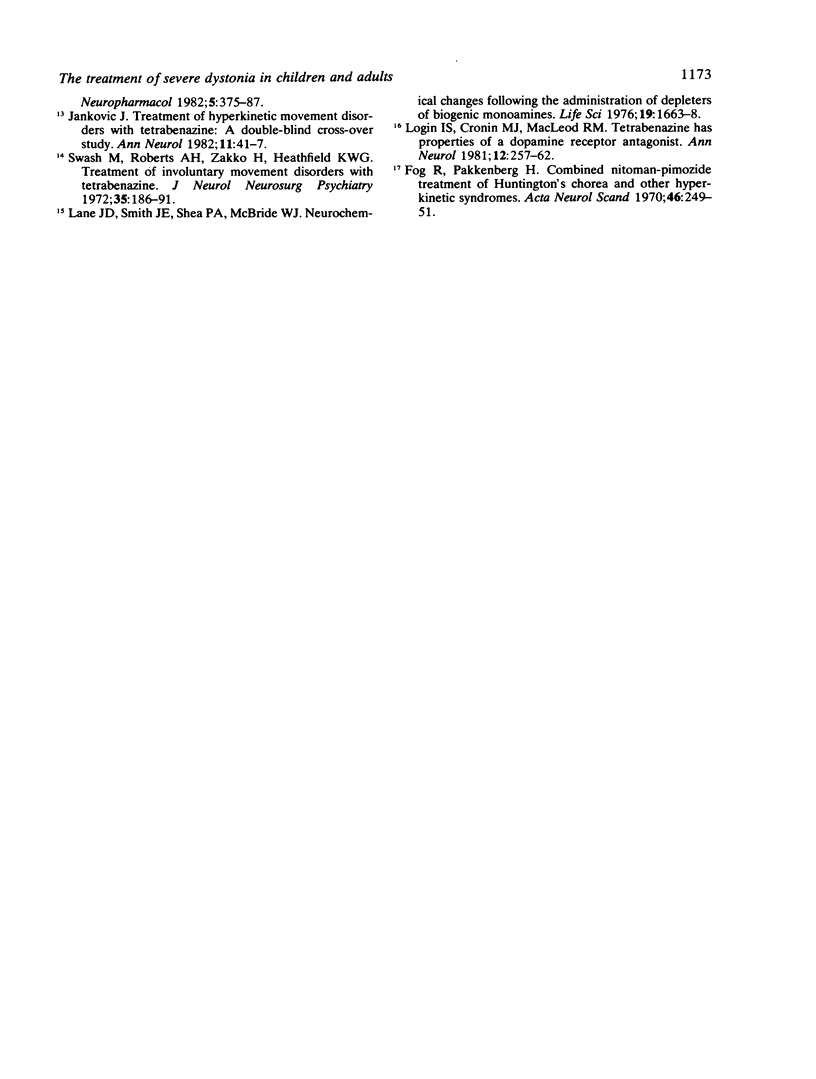
Selected References
These references are in PubMed. This may not be the complete list of references from this article.
- Burke R. E., Fahn S., Gold A. P. Delayed-onset dystonia in patients with "static" encephalopathy. J Neurol Neurosurg Psychiatry. 1980 Sep;43(9):789–797. doi: 10.1136/jnnp.43.9.789. [DOI] [PMC free article] [PubMed] [Google Scholar]
- Burke R. E., Fahn S., Jankovic J., Marsden C. D., Lang A. E., Gollomp S., Ilson J. Tardive dystonia: late-onset and persistent dystonia caused by antipsychotic drugs. Neurology. 1982 Dec;32(12):1335–1346. doi: 10.1212/wnl.32.12.1335. [DOI] [PubMed] [Google Scholar]
- Crow T. J., Grove-White I. G. An analysis of the learning deficit following hyoscine administration to man. Br J Pharmacol. 1973 Oct;49(2):322–327. doi: 10.1111/j.1476-5381.1973.tb08379.x. [DOI] [PMC free article] [PubMed] [Google Scholar]
- Fahn S. High dosage anticholinergic therapy in dystonia. Neurology. 1983 Oct;33(10):1255–1261. doi: 10.1212/wnl.33.10.1255. [DOI] [PubMed] [Google Scholar]
- Fog R., Pakkenberg H. Combined nitoman-pimozide treatment of Huntington's chorea and other hyperkinetic syndromes. Acta Neurol Scand. 1970;46(2):249–251. doi: 10.1111/j.1600-0404.1970.tb05621.x. [DOI] [PubMed] [Google Scholar]
- Fuenmayor L. D., Vogt M. Production of catalepsy and depletion of brain monoamines by a butyrophenone derivative. Br J Pharmacol. 1979 Sep;67(1):115–122. [PMC free article] [PubMed] [Google Scholar]
- Jankovic J. Treatment of hyperkinetic movement disorders with tetrabenazine: a double-blind crossover study. Ann Neurol. 1982 Jan;11(1):41–47. doi: 10.1002/ana.410110108. [DOI] [PubMed] [Google Scholar]
- Lane J. D., Smith J. E., Shea P. A., McBride W. J. Neurochemical changes following the administration of depleters of biogenic monoamines. Life Sci. 1976 Dec 1;19(11):1663–1667. doi: 10.1016/0024-3205(76)90071-0. [DOI] [PubMed] [Google Scholar]
- Login I. S., Cronin M. J., MacLeod R. M. Tetrabenazine has properties of a dopamine receptor antagonist. Ann Neurol. 1982 Sep;12(3):257–262. doi: 10.1002/ana.410120308. [DOI] [PubMed] [Google Scholar]
- Obeso J. A., Rothwell J. C., Lang A. E., Marsden C. D. Myoclonic dystonia. Neurology. 1983 Jul;33(7):825–830. doi: 10.1212/wnl.33.7.825. [DOI] [PubMed] [Google Scholar]
- Perry E. K., Gibson P. H., Blessed G., Perry R. H., Tomlinson B. E. Neurotransmitter enzyme abnormalities in senile dementia. Choline acetyltransferase and glutamic acid decarboxylase activities in necropsy brain tissue. J Neurol Sci. 1977 Nov;34(2):247–265. doi: 10.1016/0022-510x(77)90073-9. [DOI] [PubMed] [Google Scholar]
- Pinder R. M., Brogden R. N., Swayer R., Speight T. M., Spencer R., Avery G. S. Pimozide: a review of its pharmacological properties and therapeutic uses in psychiatry. Drugs. 1976;12(1):1–40. doi: 10.2165/00003495-197612010-00001. [DOI] [PubMed] [Google Scholar]
- Sheehy M. P., Marsden C. D. Writers' cramp-a focal dystonia. Brain. 1982 Sep;105(Pt 3):461–480. doi: 10.1093/brain/105.3.461. [DOI] [PubMed] [Google Scholar]
- Swash M., Roberts A. H., Zakko H., Heathfield K. W. Treatment of involuntary movement disorders with tetrabenazine. J Neurol Neurosurg Psychiatry. 1972 Apr;35(2):186–191. doi: 10.1136/jnnp.35.2.186. [DOI] [PMC free article] [PubMed] [Google Scholar]


